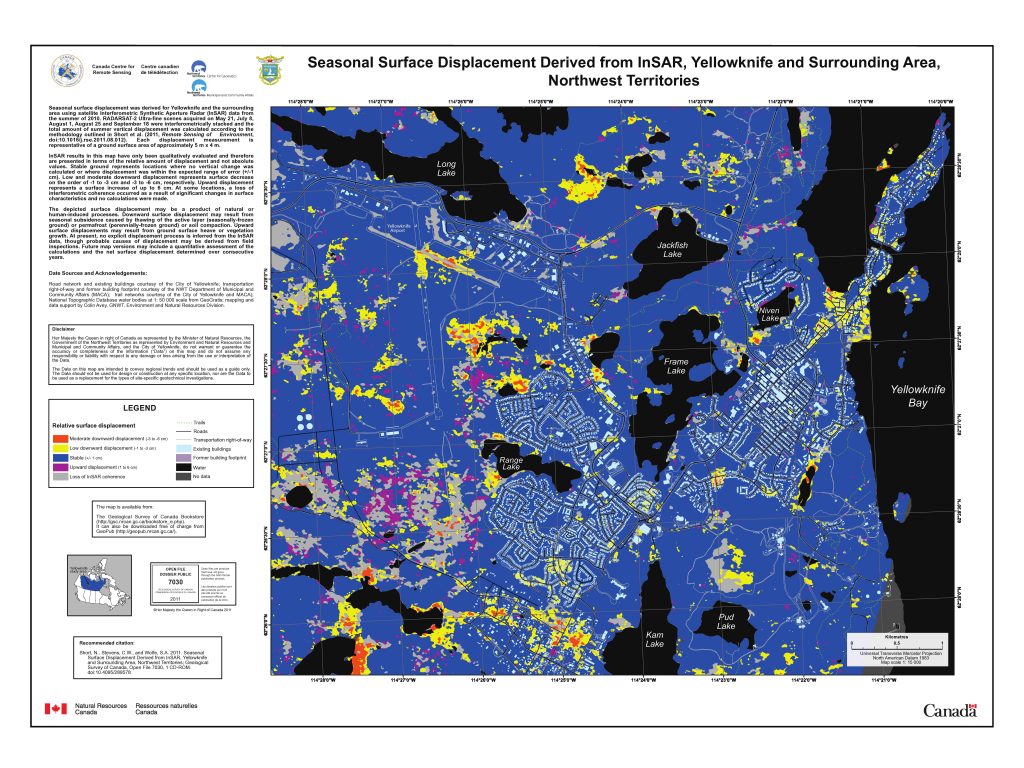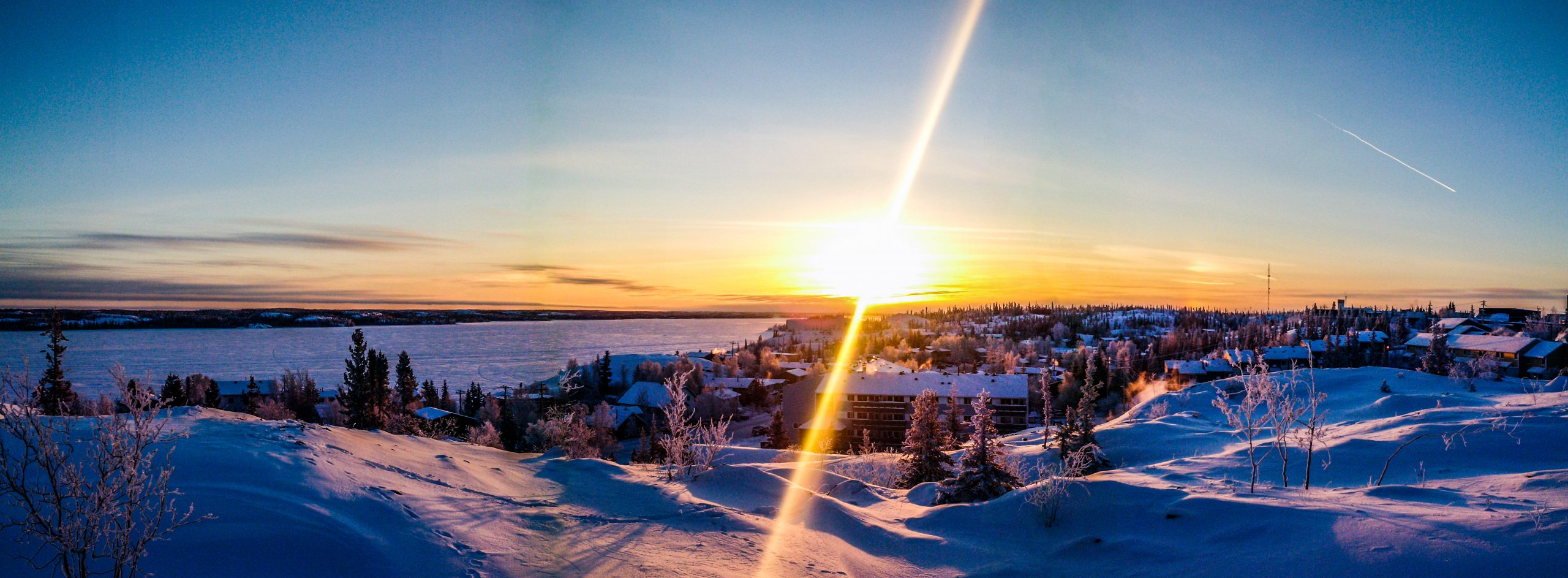In most respects, buying a home in Yellowknife is similar to buying one anywhere else in Canada. But in four important ways, it is very different.
1. The Importance of Sunlight
Everyone who is planning a move to the North knows that we have little sunlight in winter and tons of it in summer, but until you have spent a winter here it is hard to fully understand the magnitude of the role sunlight will soon play in your life. True, there are some folks for whom it matters less, but for most homeowners, the amount of sunlight your home receives and how and when it enters your home are incredibly important considerations. For many people, a west-facing back yard that receives sun after 5pm and well into the evening is ideal. For others, and especially for those who work from home during the day, southern exposure is preferable – especially during the winter. In some cases, a home can have the best of both worlds – sunlight entering the home from the south during the short days of winter and bathing the back yard with light during long summer evenings.
Window placement is also very important. A great many homes are designed by someone sitting at a computer with zero knowledge of the eventual orientation of the home. An unobstructed southern exposure will not matter if there are few windows along the southern side of the home.
As well as the orientation of a home and window placement, buyers should consider what surrounds the home – especially what lies to the south and west. Even with an abundance of south-facing windows, a bungalow with a two-storey home to the south of it may be in shadow for half the year. The sun doesn’t rise very high in our northern sky, and it may not rise high enough to clear the neighbour’s roof. To give you an idea, at solar noon on March 21 (the vernal equinox), the sun in Yellowknife only rises 28 degrees above the horizon.
Folks who take frequent tropical vacations, or those who grew up in the North, may not care how much sunlight their home receives, but for most buyers it should be a significant consideration.
2. Our Homes Move
While there are many parts of Canada where permafrost causes homes to shift slightly (a process called “frost heave”), generally speaking, the further north you go, the bigger the issue becomes. But latitude isn’t the only factor – soil conditions and precipitation play their parts as well. A community above the Arctic circle that has predominantly sandy soil and little rain and snowfall may not shift as much as one further south with soil that retains more water. For homes built on concrete foundations pinned to bedrock there is little to worry about, but for homes on concrete slab, steel pile and especially wood block foundations, frost heave is a fact of life.

For Yellowknife homebuyers, the most important thing to know is that permafrost issues can vary greatly from one street to the next and even one house to the next. Your Realtor or your home inspector can advise you on the case-by-case specifics, but a general guideline is that homes situated on land that retains a lot of water – be it because of soil characteristics, poor drainage, nearby water bodies, groundwater, or any other source of water – will experience more seasonal movement than homes on land with none of those characteristics.
The impacts of seasonal frost heave can be mitigated with drainage improvements – eavestroughs, French drains and re-grading of land away from the home – and can be managed by having your home professionally levelled every so often. But buyers and their Realtors should always inquire as to the frost heave and levelling history of a home prior to buying (and be sure to ask for copies of levelling invoices.) Some homes virtually never need levelling, while others nearby need it every couple of years. Having a home professionally levelled can cost anywhere from $4,000 to $10,000 and can result in cracks that require painting, so a home’s history of seasonal shifting should absolutely factor into its sale price.
A “Nice” Back Yard
Many home buyers across Canada value big, private, sunny back yards with room for a garden and for the kids to run around. And in many southern-Canadian cities its not rare to find such yards. We have fewer of them in Yellowknife for the simple reason that precambrian shield dominates our geography. Some readers will argue that exposed bedrock makes for a wonderful back yard feature, but, be that as it may, it isn’t what most southern Canadians envision when they think of their ideal back yard.
Besides functionality, precambrian shield impacts Yellowknife yards in a second way – their size. Bedrock is expensive to build on, not only for the construction of houses but also for water, sewer and road infrastructure. As a result, when neighbourhoods are planned in areas that have a lot of bedrock, in order to recover costs, city planners will keep lots small. Lots that are small in size sell for a higher price per square foot than larger ones.
That said, many of Yellowknife’s most striking and sought-after homes are built on exposed bedrock and have small yards. A small, rocky yard is definitely not a deal breaker for every buyer, but for those moving here from areas where homes have yards like the outfield at Wrigley Field, it takes some adjusting.
Propane Problems
The Northwest Territories is one of the few jurisdictions remaining in Canada that still depends largely on home heating oil to heat homes. Heating oil is problematic, because if it leaks into soil, the soil has to be removed and replaced. Heating oil contamination beneath and around homes can cost millions to remediate. Given this, and given the poor efficiency of heating oil furnaces, Yellowknife has been moving towards propane since the 2000s. And from about 2011 until 2018, it was a municipal building code requirement. But although propane gas will not leak into soil under normal conditions, it unfortunately has a completely different problem – it turns from a gas into a liquid (or a gel, as it is often described) at -42 degrees Celsius. And problems can occur even in the low -30s, because as propane gets colder it sheds water, which can freeze up your regulators (the red thing on the wall in the picture below.) And regulators themselves run colder than the ambient air, so they may reach -42 even if your weather app says its not quite that cold outside.
 Some homes never experience problems with propane “gel-ling,” but rest assured, there is always an explanation as to why. It may be that they have heated crawlspaces which keep the tanks slightly warmer. Or, even with an enclosed crawlspace or concrete foundation, it may be that the tanks are protected from the wind which, along with the slight heat loss from the house, achieves the same effect. Whatever the case may be, you too can count on having propane problems at these colder temperatures unless you have CSA certified propane tank heaters installed on your tanks. If you purchase a home that does not have propane tank heaters, resist the temptation to install them yourself or to use some other “home remedy.” Only ever let qualified professionals make changes to your tanks, and make sure you retain paperwork for future owners.
Some homes never experience problems with propane “gel-ling,” but rest assured, there is always an explanation as to why. It may be that they have heated crawlspaces which keep the tanks slightly warmer. Or, even with an enclosed crawlspace or concrete foundation, it may be that the tanks are protected from the wind which, along with the slight heat loss from the house, achieves the same effect. Whatever the case may be, you too can count on having propane problems at these colder temperatures unless you have CSA certified propane tank heaters installed on your tanks. If you purchase a home that does not have propane tank heaters, resist the temptation to install them yourself or to use some other “home remedy.” Only ever let qualified professionals make changes to your tanks, and make sure you retain paperwork for future owners.
One other propane-related quirk warrants mention: most tanks in town are owned by propane distributors and rented to homeowners for a nominal fee, but the tank heaters have to be purchased. So make sure the propane tank heaters are listed as included items on your purchase agreement.
If you found this blog post valuable, we would really appreciate a Google review (to do so, follow this link: https://g.page/r/Cf_LTIUkVkX6EAI/review). We strive to educate homeowners, whether they are our clients or not, because we believe that a careful and considered home purchase has a lot to do with how long people stay in the North and contribute to our communities. We are passionate about the North, we are active in our communities, we intend to live here for a very long time and we want to build lifelong relationships with our clients and neighbours. Thanks!

 Facebook
Facebook
 X
X
 Pinterest
Pinterest
 Copy Link
Copy Link

